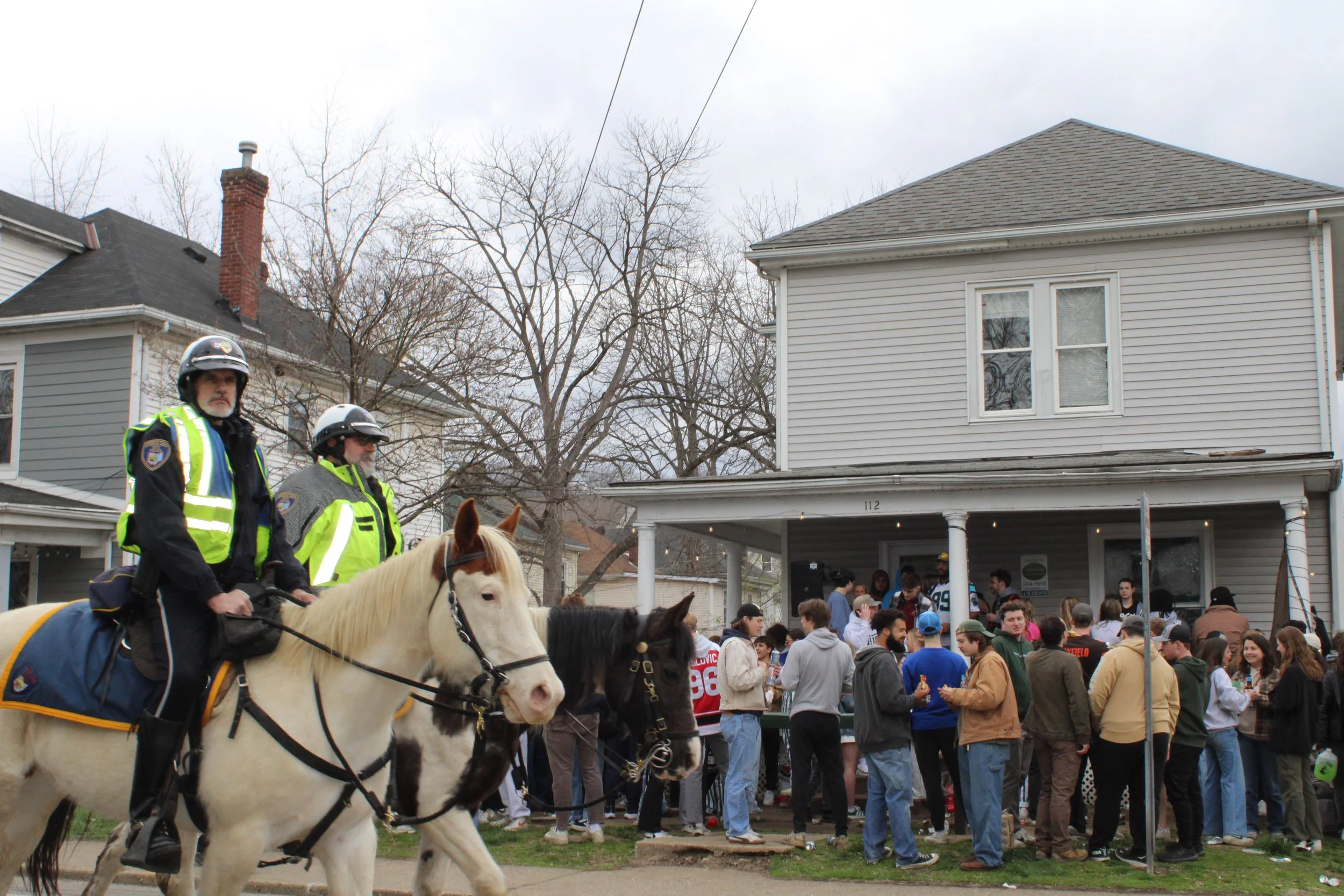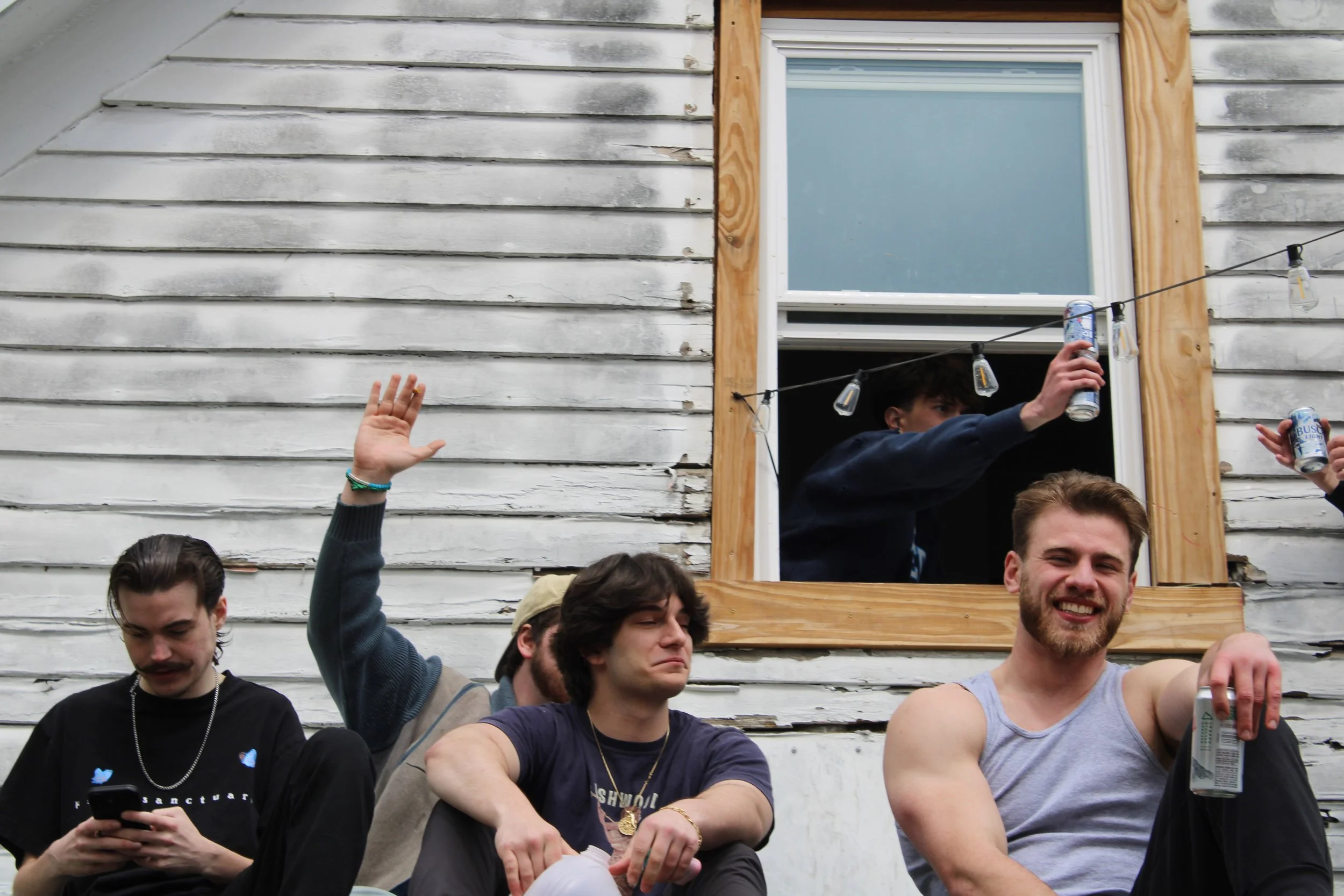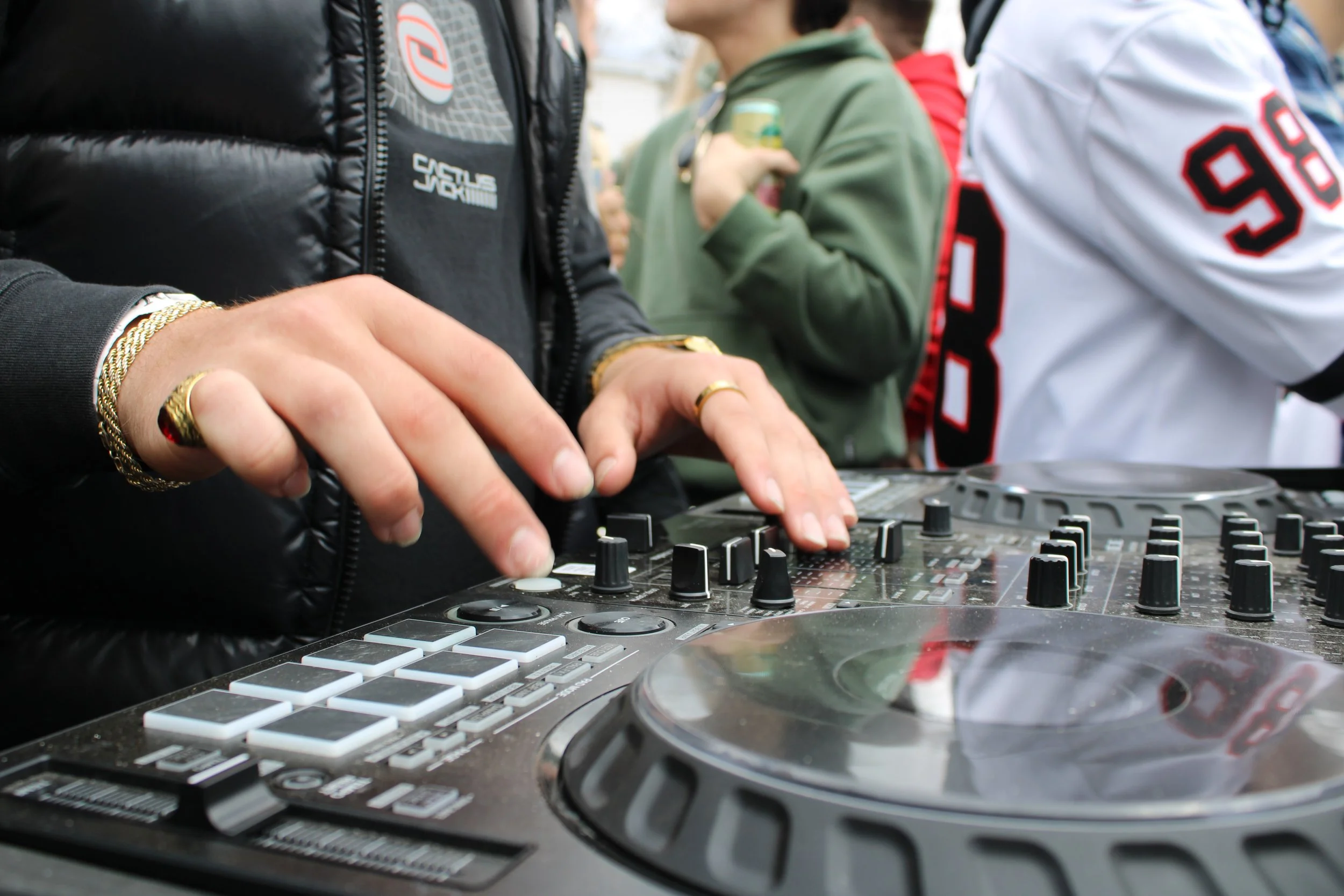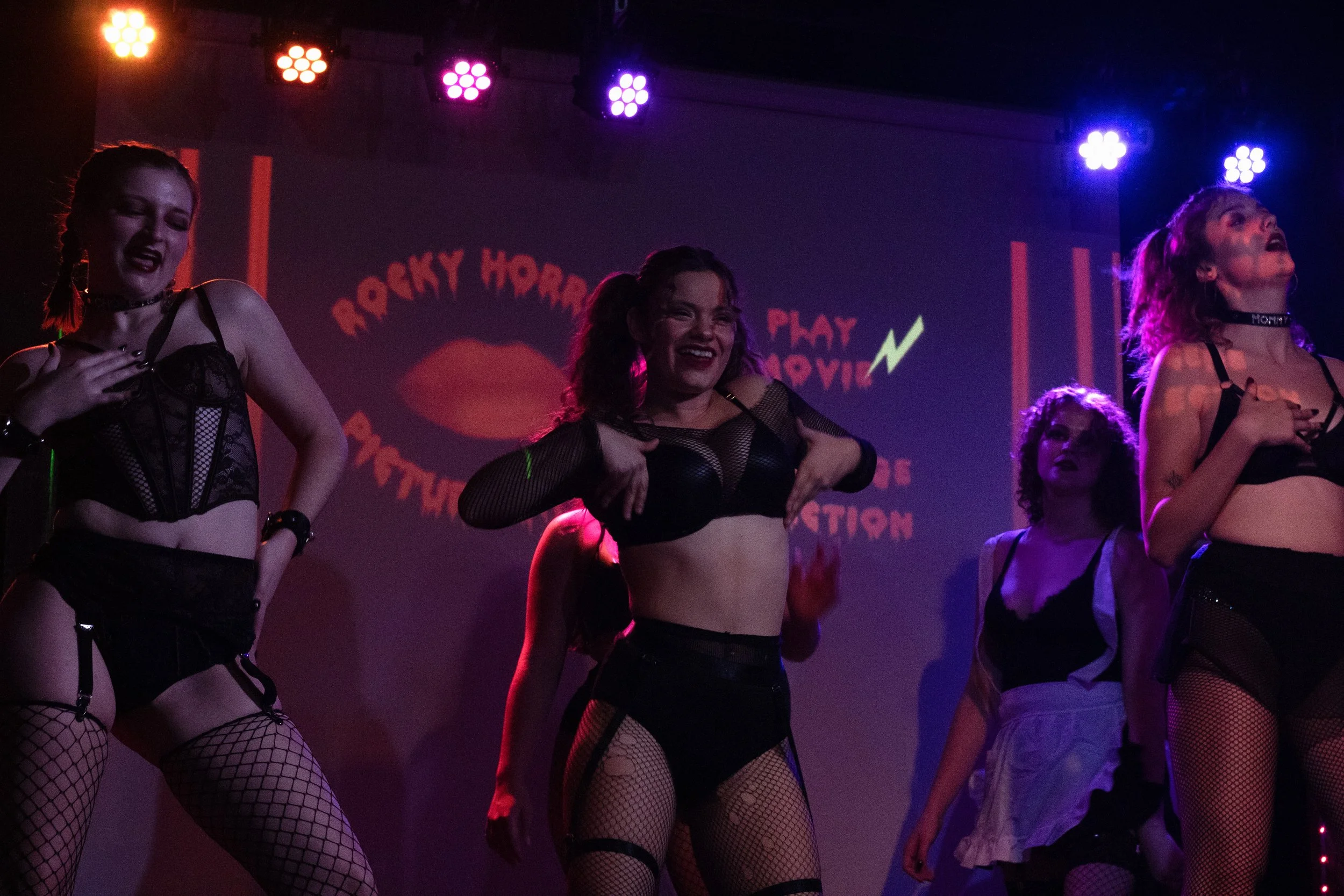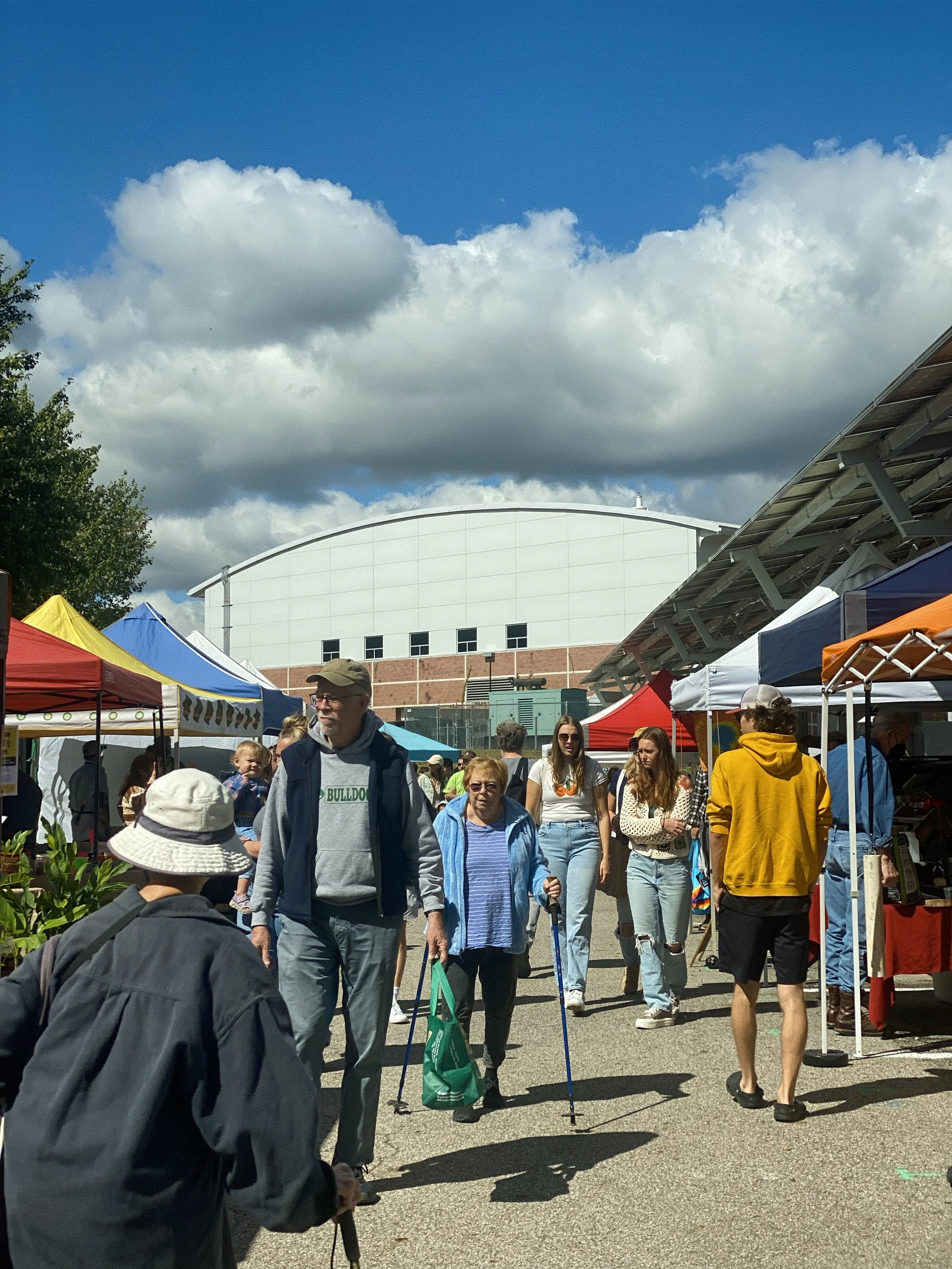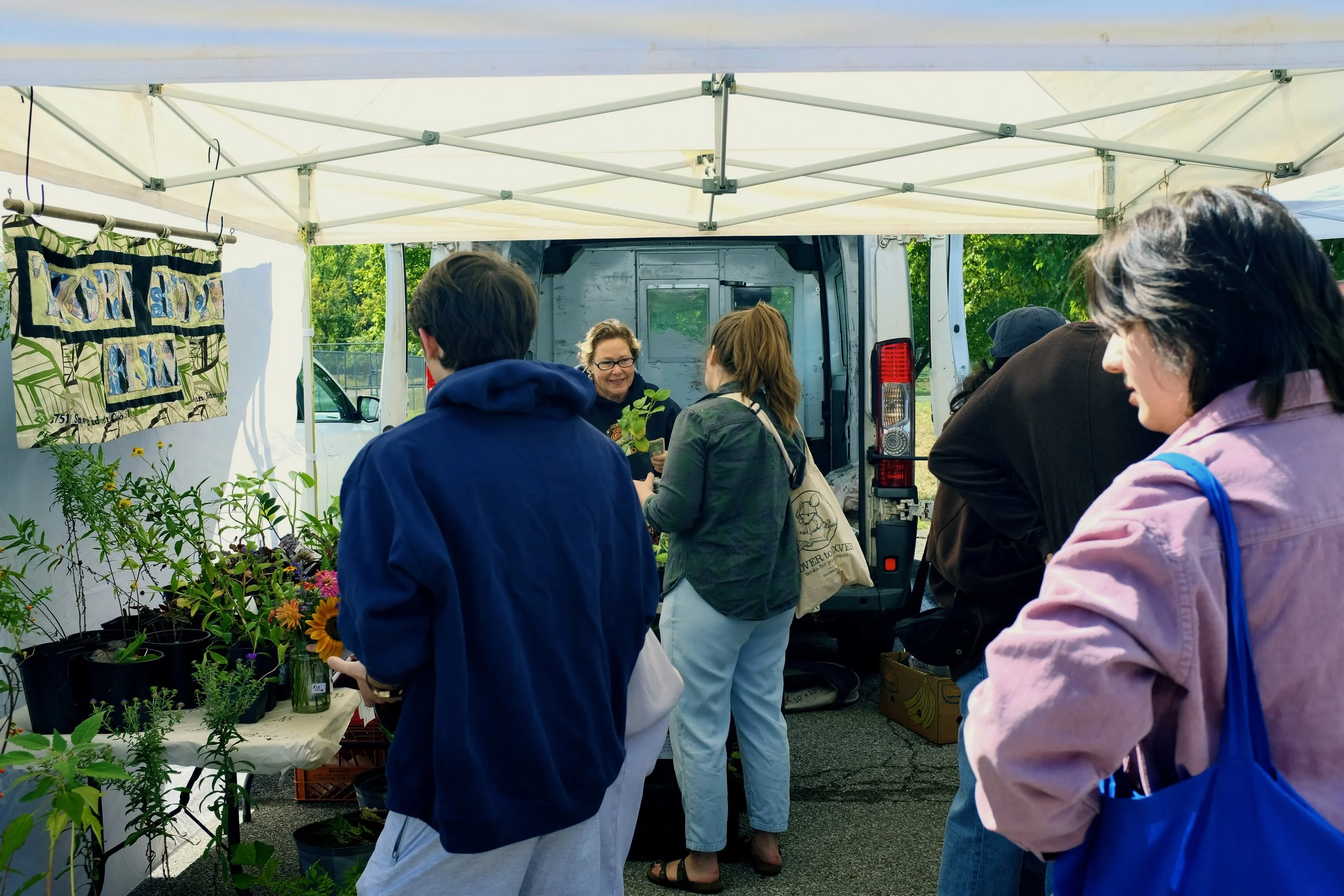A HISTORY OF OHIO UNIVERSITY’S FEST SEASON
BY LAUREN STIDHAM PHOTOS BY GABRIELLE CABANES
Ohio University, located in Southeast Ohio, has held its reputation as one of the country’s biggest party schools for years. But how has it maintained this status? OU’s infamous Fest Season has earned the college this long standing title, and the origins of this tradition are far from a small celebration.
Springfest, kicking off in the 1960s, was the fest that started it all. Jan Angilella, who graduated from OU in 1986, attended this festival annually during her time at OU, and remembers the festivities fondly.
Fest goers enjoy the party atmosphere from the rooftops
“Basically, it was a big music festival and there were some vendors as well… there were local bands early in the day, then a big national headliner closed it out,” Angilella wrote in an email. “The rest of the time we were just hanging out with everybody, drinking beer. Some people hopped in the Hocking River and others climbed the big hill across the highway.”
Intoxicated attendees, hundreds of kegs, a stage, and live performers occupied the usually secluded Intramural Fields. Each year guaranteed a new experience.
“Freshman year, it rained and The Post may have called it Mudfest... Sophomore year, it was a glorious sunny day… Junior year, Greg Kihn played about an hour while we stood there under the pouring rain… and the committee had to cancel the rest of it. Senior year was hot and sunny… the national headliner was a band called Jason and Scorchers… The local favorites, I-Tal, played after them and closed the festival…everybody was dancing and singing and just enjoying the end of what was a really great day,” Angilella wrote.
Jerry Ryba, co-chairman of the Springfest of 1986, was the head of the event alongside co-chairman Mary-Beth Fischer.
“I was the first person hired to run the event, and then we hired our team,” Ryba said. “...we hired a music director, we hired a finance director, beverage director, security person. We had a team of about 12 as the board executives (who) handled everything so that we could pass things off because (we were) still going to school.”
Organizing this event was no small task, and fundraising was done year round to ensure the event was successful.
“Back then it was all student funded and student run… all the money that we raised until the event was to put on the show,” Ryba said. “We had to raise $17,000 by a certain date, otherwise, we couldn't have Springfest because we didn't have money for staging. (If) we didn't have staging, sound, and lights and all the basics, we weren’t gonna have a show.”
The committee, knowing the party culture that reigned in Athens, organized lively events and took to the bars for contributions.
The DJs keep the festivities going with good music
“Every week we were doing an event to raise money for Springfest. We did a Battle of the Bands…the people that won the bands, they got to play at Springfest,” said Ryba. “We did big events, like “The World’s Largest Indoor Beach Party,” where we took the ice off the hockey rink and we filled it up with sand, and then the winners of the bands played there.”
They also had events such as “Jars for Bars,” in the numerous Court Street bars, where anyone could donate, and they sold buttons on the street for the cause. They also held an annual “Springfest Old-Style Softball Tournament” to fundraise for the event.
Green Fests were thrown in the weeks leading up to Springfest. These events took place in late May, marking the end of the Spring quarter for students.
“We were on the quarters system at the time: three 10-week quarters before summer. So Springfest was the culmination of Spring quarter. Leading up to it, there were Green weekends,” Angilella wrote. “Festivities started on Friday night and then continued all day Saturday and into the night.”
The cafeterias would grill steaks for students on that day, and it was a string of celebrations that prepared the entirety of Athens for the big event ahead.
The drinking law changed everything for events going into the 1990s.
“During my time, it went from 18 to 19 for beer, and then from 19 to 21 for everything… The drinking law changed the whole fest situation,” said Ryba.
After the most successful of the fests in the 1980s, “Fest Season” began to transition into what it is known as today.
Despite OU’s largest celebration fading out, the students preserved the chaotic party culture well past Springfest’s end. Dave Uhlmanseik, who graduated from OU in 1996, attended OU during the early years of the new street fests.
“(During) the parties on Palmer fest, they used to close down and barricade both ends of the street. During the day, you're all out front, and there would be some kegs on the houses. Then usually it would die around around four, maybe five o’clock because everybody was trashed,” Uhlmanseik said.”Then it would pick back up at night… and then all the houses would have back yard parties and there would be a ton of kegs and everything on the porches.”
Uhlmanseik fondly remembered the freedom of these festivities in a pre-internet environment.
“There were no cell phones, there were no cameras, so there wasn't everybody posting anything to the social network and all that. You were a little bit more free to act crazy. That was Palmer Fest where…I saw a guy standing on a roof with a beer bong that had three tubes coming off of it, nine feet long, going down to an individual standing in the driveway,” Uhlmanseik said.
The police take to horseback to keep crowds under control
Police presence today is another stark contrast compared to the older days of Fest Season.
“The only time anybody got in trouble is if you walked off of Palmer fest with an open beer…you might have gotten in trouble or napped, but…everybody left you alone,” said Uhlmanseik. “There's too many rules now, and the cops are way out of control, trying to snag as many underage drinkers as they can.”
While OU remains a noteworthy contender in the party scene of college rankings, it is a rich history of kegs and celebration that can only be accredited to the lively alumni that kept the culture alive.
“ROCKY HORROR PICTURE SHOW” DELIGHTS AND SCARES FOR ANOTHER YEAR
With over two decades of history under its corset, the Lost Flamingo Theater Company’s annual production of “Rocky Horror Picture Show” returns for another jaw-dropping year
BY JACKSON MCCOY PHOTOS BY NATALIE YANG
As October heads into its last few days, the residents of Athens are all reminiscing on the city’s biggest month. Although many associate October in Athens with its massive Halloween weekend celebration, another highly anticipated event occurs every year around this time: Lost Flamingo Theater Company’s (LFC) production of “The Rocky Horror Picture Show.”
The show opened on Oct. 16 at The Union, located at 18 W. Union St., and ran until Oct. 19. LFC’s performance is a shadowcast production, meaning the original “Rocky Horror” film plays while the LFC actors move and act along with it.
The “Rocky Horror” film did poorly among critics upon its release in 1975 but gained a cult following shortly after. Its representation of queer identities and “camp” aesthetics made a lasting impression on audiences in the late ‘70s which lives on even now.
The shadowcast LFC employs for its show is rooted in the culture surrounding the film and its history. The production, since it first showed in Athens with LFC in the early 2000s, has used a shadowcast for its show.
“Since the movie came out in 1975 … it was ahead of its time,” Anna Martin, a sophomore studying hearing, speech and language sciences and the director of “Rocky Horror,” said. “Being able to honor that and do it for the 21st year here with The Union and with our company, to put that on and to show queerness, to [raise] awareness of those who are and who aren't, and let them be who they are and enjoy the show.”
A major part of “Rocky Horror” is the over-the-top wardrobes of the different characters. This fashion sense has spilled out into the movie’s fans, with audiences donning campy outfits mirroring the motifs found in the film.
“I know people that have their outfits picked out since last year after ‘Rocky’ just because it's always the corset style,” Martin said. “It is always black or it's red. It's very lingerie style. Everybody comes in whatever they're comfortable in. Everybody's complimenting each other and hyping each other up in their own sexualities in the crowd as well as on stage.”
The demand for actors in the show is high, with late-night rehearsals starting in early September. Charlie Lakus, a freshman studying English literature, found himself taking on the central role of Brad. His background in high school theater helped him prepare for the show, but he said he had never been a part of a show quite like “Rocky Horror.”
“This is kind of like a big step up from high school theater, where you have better directors, more experienced casts, and … it really puts you in that element,” Lakus said.
Despite the more intense involvement required for “Rocky Horror,” Lakus said he still finds happiness while working with his fellow actors.
“You get into that state where you've been busy all day, and you kind of just need to cool off and do something that's fun and that you enjoy doing,” Lakus said.
LFC and The Union have been business partners for “Rocky Horror” since its first show 21 years ago. Even now, Union staff lobby to be a part of the production. Maddie Quillen, the sound tech at The Union, has worked the “Rocky Horror” performances for three years now and doesn’t plan on stopping.
“There's a reason that I pick up ‘Rocky’ every single year or try to,” Quillen said. “‘Staff me on Rocky unless somebody else really specifically wants to do it,’ because it's just fun. It's a really good time and I just get to hang out and watch the lobby sometimes.”
For the performers and people behind the stage, “Rocky Horror” is more than just a student production. Alexis Butt, a junior studying marketing and business analytics and the assistant director, shared she has felt a connection to the show since before coming to Athens.
“Just being a part of it, and like, everyone in ‘Rocky’ is just so amazing,” Butt said. “We're all just honestly a family, and it's just really awesome.”
In Athens, “Rocky Horror” is one of the highlights of the year. This may seem like an added stressor for the people involved in making it possible, and it certainly can be; however, the performers push through the stage fright to deliver a truly thrilling show each night.
“This has been a tradition for years and years and years,” Lakus said. “There’s a lot of pressure, but it’s guaranteed we have a full house every night.”
A BRIEF HISTORY OF THE MOTHMAN FESTIVAL
BY SOPHIA ROOKSBERRY PHOTOS BY SILAS COLEMAN
Appalachian folklore is haunted by characters known as cryptids. Defined by the Cambridge Dictionary, a cryptid is “a creature that is found in stories and that some people believe exists or say they have seen, but that has never been proven to exist.” Some of the world’s most famous cryptids include Bigfoot and the Loch Ness Monster. While perhaps not famous on a global scale, Mothman is one of the more famous mythical creatures in Appalachia, particularly in West Virginia.
Point Pleasant, West Virginia, has long been known as the location of the last Mothman sighting in the late 1960s. According to Folklife Magazine, the first local reports of the sightings were made in November of 1966 and continued until the creature disappeared following the collapse of the Silver Bridge in 1967.
After his disappearance, the community began asking questions: had Mothman been trying to warn the people of Point Pleasant of the impending tragedy? Was Mothman the one responsible for the disaster? The numerous curiosities surrounding this creature led to a cult following throughout the end of the 20th century and into the early 2000s when the Mothman Festival began.
The first Mothman Festival was held in 2002 as a way to boost tourism in the city of Point Pleasant, as well as to provide an outlet for fans of paranormal activity and Appalachian folklore. The event is held annually during the third weekend of September in the center of Point Pleasant, with Dayton Daily News reporting an attendance of around 15,000 people last year.
From cosplayers to guest speakers, people travel from around the world to experience the Mothman Festival. Festival attractions include live music, vendors, hayrides, a 5k run and involvement in a rich community of cryptid-believers.
Although admission to the festival is free, organizers also include some exclusive attractions for a price. One experience is the TNT Bus Tour, on which a tour guide leads patrons to the World War II bunkers near where Mothman was first sighted. This event gives attendees the chance to get a first-hand look at where the Mothman legend began, and, according to the festival’s website, to “learn about rarely discussed stories and strange encounters from the eyewitnesses point of view.”
Many attendees also use the festival as an excuse to visit the Mothman Museum, the only one of its kind. The museum contains an extensive collection of memorabilia from “The Mothman Prophecies,” a 2002 film created at the height of Mothman’s cult following. The museum also documents eyewitness accounts from Mothman’s residency in Point Pleasant and encourages visitors to “research and uncover the truth” for themselves.
The legend of Mothman has been a staple of the Point Pleasant community for decades. Although the town will always be a part of Mothman's history, it is speculated to have been displaced as the site of his most recent appearance. In 2019, WBEZ Chicago reported “a giant, flying, winged humanoid” had begun surfacing in 2011, with peak sightings reported in 2017. Whether or not these sightings mark the official return of Mothman is unclear, but it may mean a future expansion of the Mothman Festival.
ATHENS FARMERS MARKET: SUSTAINABLE OR OUT OF REACH?
STORY AND PHOTOS BY OLIVIA LEGGANS
Amid a slew of environmental dilemmas, buzzwords like sustainable and eco-friendly are meaninglessly tacked onto products and thrown around without real understanding, making it difficult for consumers to understand their agency. From zero-waste TikTok accounts to under-consumption core, young people are beginning to shoulder expectations to use less plastic, buy sustainably grown food, and avoid supporting large corporations.
Supporting local farmers reduces carbon emitted via the food distribution system and funnels resources into local economies. Shopping seasonally contributes to an ideological shift away from food as a commodity, ultimately giving consumers more control over their needs and their environmental impact. Helping one’s community ultimately helps oneself. Local patronage is not a new concept, yet it is far from the norm.
Many know that supporting local farmers is environmentally sustainable yet are unsure if they are individually sustainable. Can low-income groups consistently afford inconsistently priced local produce? Can a smaller array of seasonal foods dominate the countless packaged and processed products? In Athens, in particular, is the farmers market a viable option for all college student food purchases?
Athens’ own farmers market attracts many local and visiting customers. Clusters of kids trailed behind dogs while they weaved in and out of the stalls that lined the Athens Community Center. 20-somethings aided elderly women by carrying their weekly loot of meat and produce. Ohio University students traveled in groups and held boxes of diverse plants and crocheted characters. Despite the heavy turnout, not all shoppers relied on the farmers market for their daily food consumption.
Last Saturday, Zelda Thayer, Anna Stenger, Lily Sobey, and Jess Shimp, who attend Ohio University, visited the Athens farmers market, yet not out of necessity for food.
When asked what they hoped to purchase, Stenger said, “just fun things.”
“A lady pulled me in to buy plants,” Shimp said, with a cardboard box in hand and plant vines cascading down its sides.
Countless other young people perused the produce stalls but ultimately purchased the pottery, jewelry, or plant products. Some gathered around music groups that sang and played guitar, while others simply walked and talked. The Athens Farmers Market was evidently a social outing, a Saturday morning activity — not an alternative to Walmart or Kroger.
Thayer said their grandmother visits the Athens Farmers Market with a set list to stock up on staple items like meat, eggs, bread, and produce. Thayer’s grandmother buys what is available at the market and freezes items for the future. The four OU students agreed that their shopping habits differ greatly from those of Thayer’s grandmother because of convenience and the high prices at the farmers market.
“Establishing relationships with the [sellers] would probably get you deals,” Thayer said. “The costs would likely even out.”
Athens has three major grocery stores with wide product selections and consistent, although not always affordable, pricing — all less than a mile away from the Athens Farmers Market. On the surface, corporate grocers are understandably the preferred option among college students.
The variation in seasonal availability and shopping habits (available brands, organic options, personal preferences, etc.) makes price comparisons between supermarkets and local markets complicated. However, produce that is in-season does not have to travel as far as out-of-season produce, therefore intentionally buying seasonal produce is both environmentally and economically beneficial.
Utilizing local markets as the first stop on grocery runs allows consumers to learn what is in-season throughout the year and save money in the process. Forgoing the out-of-season options that traditional supermarkets offer year-round may seem like a loss of flexibility, yet choosing where and who food comes from gives consumers more agency over what comes out of their pockets and goes into their bodies. Using the Athens Farmers Market, even if only for supplemental food purchases, benefits the local farming community.
Gaewelyn Krisher, a sophomore at OU, comes to the Athens Farmers Market every week with her mother. Krisher’s family partially relies on the market for their routine groceries. Typically, their purchases at the farmers market and traditional grocery stores are split half and half, she explained.
“It’s something really special about Athens and I think it’s really unique,” Krisher said. Everyone is really nice here.”
Krisher and her mother know Dr. May, owner of Dr. May’s Thai Kitchen at the Athens Farmers Market. She enthusiastically referenced vendors that she developed relationships with and continues to support.
During the summer months, the market sports a spread of staples including hydroponic lettuces, root vegetables, corn varieties, tomatoes, peppers, berries, apples, and countless other locally grown produce. Food stalls provide pockets of alluring smells and sizzling sounds. From Dr. May’s mango sticky rice and siracha quail eggs to Hei Hei’s kimbap and Spam musubi, ready-to-eat snacks ensure no one shops on an empty stomach.
While students’ various financial means and food preferences make explicitly relying on the Athens Farmers Market for all food needs unrealistic, buying locally whenever possible increases awareness concerning the value of buying seasonally. Simply by showing up to the Athens Farmers Market, students can learn about and show support for local farms. This takes power away from corporate grocery stores and returns it to local farmers, consumers, and students.
The Athens Farmers Market takes place every Saturday from 9 a.m. to noon, year-round, and on Wednesdays from 9 a.m. to noon from April 17-Nov. 27. Located at the Athens Community Center, the L2 and L3 Athens Public Transit bus lines service the Athens Farmers Market.
